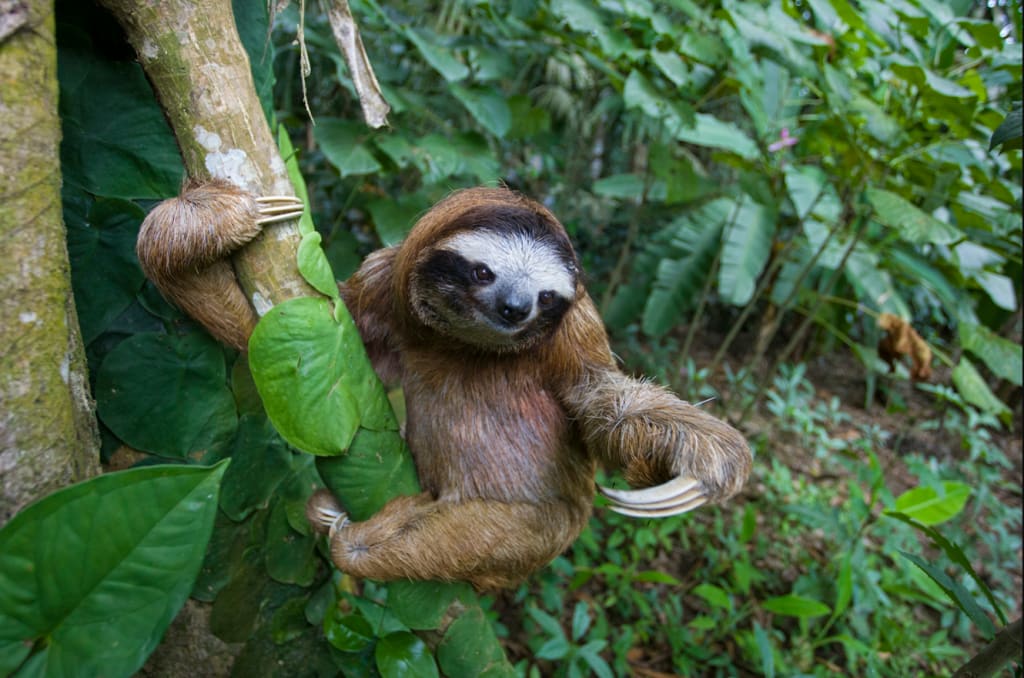
In 1796, a peculiar box of bones arrived at the doorstep of Thomas Jefferson, sparking curiosity and speculation about its origin and the creature it once belonged to. Among the assortment of skeletal remains lay a long, sharp claw reminiscent of a lion's, yet the sheer size of the arm bones hinted at a much larger beast, estimated to be around three meters in length. Jefferson, intrigued by the mystery encapsulated within the box, pondered the possibility of a colossal, undiscovered species roaming the North American landscape. Little did he know, these enigmatic bones were not remnants of a fearsome lion but rather belonged to an extinct giant sloth, an ancient denizen of the Americas.
Prehistoric ground sloths, a diverse group of megafauna, roamed the continents of North, Central, and South America for millions of years. They shared their habitat with an array of other formidable creatures such as mastodons and giant armadillos, contributing to the rich tapestry of prehistoric biodiversity. From diminutive cat-sized species to colossal behemoths like the Megatherium, these sloths varied greatly in size and appearance, yet all shared a common lifestyle characterized by their herbivorous diet and formidable claws.
Jefferson's encounter with the Megalonyx, a relatively modest representative of the ground sloth family, sheds light on the intriguing ecological role these creatures played in their ancient ecosystems. Weighing approximately a ton, the Megalonyx wielded its powerful arms and sharp claws to uproot vegetation and navigate the arboreal landscape with ease. Their dietary preferences ranged from grasses to leaves, with a particularly notable penchant for prehistoric avocados. Remarkably, the dispersal of avocado trees owes much to the giant sloths, as their ability to swallow the fruit's sizable seed facilitated its spread across vast territories.
Despite their dominance for millions of years, the reign of the ground sloths eventually came to an end around 10,000 years ago, coinciding with the decline of numerous megafauna species in the Western Hemisphere. The causes of their demise remain a subject of scientific inquiry, with theories ranging from climatic shifts associated with the onset of the last ice age to the impact of human encroachment on their habitats. While many of their larger counterparts succumbed to extinction, some smaller sloth species managed to adapt and survive by retreating to the safety of treetops, where they continue to thrive in the rainforest canopies of Central and South America to this day.
The transition to a predominantly arboreal lifestyle presented both challenges and opportunities for the surviving sloth species. While the canopy offers sanctuary from ground-dwelling predators, it also necessitates a specialized diet and energy conservation strategies to thrive in an environment where resources may be scarce. Three-toed sloths, in particular, have evolved remarkable adaptations to cope with their leaf-based diet and minimize energy expenditure.
At the heart of the sloth's survival strategy lies its unique physiology, optimized for energy conservation in the face of dietary constraints. Their multi-chambered stomachs enable efficient processing of fibrous vegetation, allowing them to extract maximum nutrients from their diet over an extended period. This prolonged digestion process, which can span several days to weeks, reflects the sloth's deliberate pace of life, characterized by minimal movement and extended periods of rest.
Furthermore, sloths have evolved a suite of anatomical and behavioral adaptations to further reduce energy expenditure. Their leisurely movements and infrequent descents from the canopy contribute to their reputation as some of the slowest mammals on Earth. By conserving muscle mass and regulating body temperature within a narrow range, sloths minimize metabolic demands, enabling them to subsist on a diet low in energy density.
Yet, the sloth's sedentary lifestyle has unintended consequences, as their unhurried demeanor and lush fur provide an ideal habitat for a diverse array of organisms, including algae and fungi. These symbiotic relationships, while beneficial in some respects, pose potential challenges for sloth health and hygiene, highlighting the intricate web of interactions that shape ecosystems.
In conclusion, the story of the giant sloths offers a window into the complex interplay between species, habitats, and environmental change over geological time scales. From their humble origins as terrestrial herbivores to their present-day existence as arboreal specialists, sloths have weathered the tumultuous tides of evolutionary history through their remarkable adaptations and resilient spirit. As stewards of Earth's biodiversity, their legacy serves as a testament to the enduring power of life to persevere and thrive in the face of adversity.
About the Creator
ava
The future belongs to those who prepare for it today






Comments
There are no comments for this story
Be the first to respond and start the conversation.